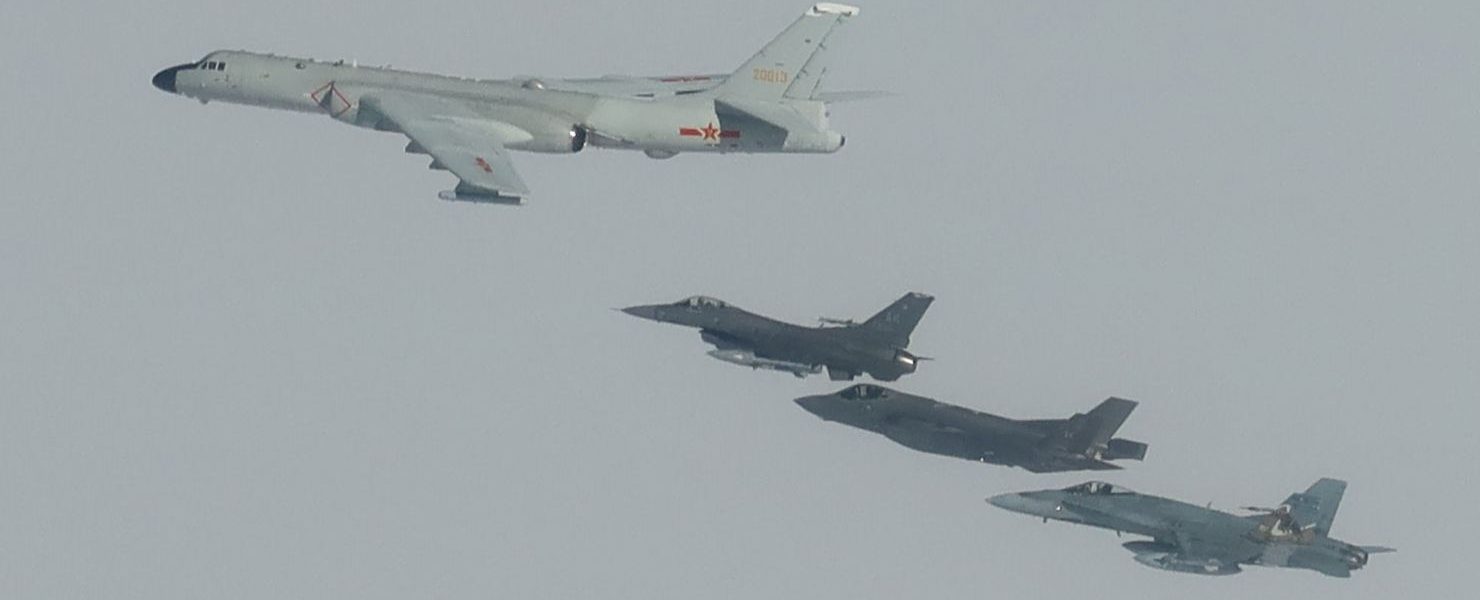Introduction
While Washington, D.C. dealt with its own headlines yesterday, significant developments were unfolding at the other end of the country. The United States was prompted to scramble jets in response to a notable joint military exercise by China and Russia near Alaska. This operation involved a fleet of nuclear-capable bombers and marked a significant escalation in airspace tensions.
Details of the Incident
The event began when four nuclear-capable bombers—two Russian Tu-95s and two Chinese H-6s—entered the US Air Defense Identification Zone (ADIZ). These bombers were accompanied by Su-30, Su-35, and SMS aircraft, indicating a coordinated drill between the Russian and Chinese air forces. A video released by the Russian Defense Ministry captured a Russian bomber being refueled mid-air, a typical maneuver for long-range missions.
NORAD’s Response
The North American Aerospace Defense Command (NORAD) detected the foreign aircraft as they entered the ADIZ, an area where the US expects notification but does not have sovereignty. NORAD responded by scrambling F-16s and F-35s from the US and F-18s from Canada to escort the Russian and Chinese bombers. The footage released by Russia showed Western aircraft maintaining close proximity to the foreign planes, underscoring the US’s readiness.
Official Statements
NORAD issued a statement confirming that the Russian and Chinese aircraft stayed within international airspace and did not enter American or Canadian sovereign territories. The command noted that the activity was not perceived as an immediate threat but reaffirmed its commitment to monitoring such operations. The approach, described as “meeting presence with presence,” aimed to demonstrate that the US was actively observing and prepared.
Context and Historical Precedents
This type of air activity is part of an ongoing pattern of military posturing between Russia and the US. Russia has previously conducted similar operations near Alaska, with notable incursions occurring in May and February. However, the involvement of China in this latest exercise represents a new level of strategic engagement and adds complexity to the situation.
China’s Perspective
China sought to minimize the impact of the incident, labeling the deployment of nuclear-capable bombers as a routine training exercise compliant with international laws. Beijing emphasized that the operation was not directed at any specific nation and was intended as a standard part of their military protocol.
Strategic Implications
The joint operation by China and Russia near Alaska highlights the increasing strategic rivalry and military competition in the Pacific and Arctic regions. The participation of Chinese bombers in this exercise marks a notable escalation and poses new challenges for US defense strategies. How the US will respond to this provocation, and whether similar future operations will occur, remains to be seen.
Conclusion
The joint China-Russia air drills near Alaska are a significant indicator of the escalating geopolitical tension between these nations and the US. As both China and Russia continue to engage in high-profile military maneuvers, the US’s response will be critical in shaping the future dynamics of international airspace and defense relations. The incident underscores the growing complexity of global military interactions and the need for vigilant and strategic responses.






